This is the running blog of our Customer Success Manager's adventures while traveling for the PMI Global Congress! Sounds like Margaret's having a great time, and she will update us as long as the MiFi holds up its battery:
--------------------------------------------------------------------------------------------------------------
Monday, Sept 26: 4:33pm
I got my shirt!
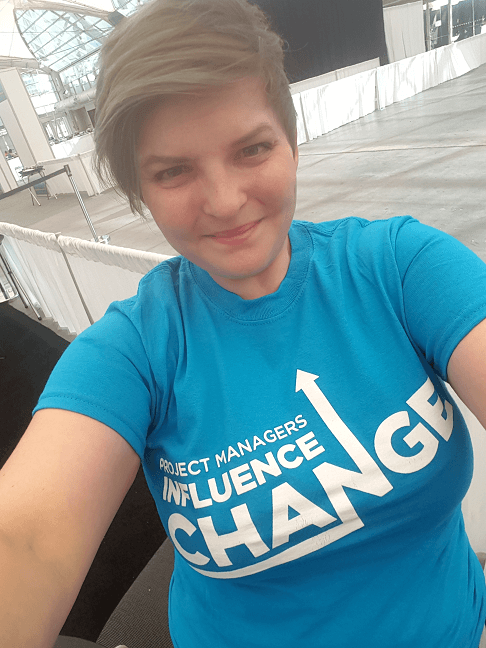
They only had smalls left. My bad. Note to all the selves out there. If you are arriving the second day of the congress, you should get your shirt first thing in the morning. I still look cute though, right?
Am I smize-ing or squinting?
Monday, Sept 26: 4:21pm
Mystery solved. I know where everybody is going:

They are all leaving. Bummer!!! I followed the crowd only to find they were leaving the convention center. There's nothing downstairs. I know because I looked. That's why it took me twenty minutes to post this photo. They are all just leaving. I guess I'll go get my shirt.
Monday, Sept 26: 3:58pm
Tech-Ed. That was the name of it. I knew I'd remember.
Monday, Sept 26: 3:37pm
So funny story in a not-so-funny-kinda-way. I was in the middle of typing up the notes for the second session, when my laptop told me it was down to 7%. [This laptop is almost a brand new laptop. Can't it give me a little warning before 7% so I'm not caught with next to nothing!!] So I think, "no big deal, sure I was panicking about making it to my next session. I'll just head to my next session and plug in, so I can work and charge at the same time."
I head to the next session on Meaningful Metrics and the talk is starting, and I am still frantically making spelling/grammar fixes. "It's ok," I'm thinking, "at least I'm here in the room. I've got my space by the outlet. I'm doing fine." All the beginning is all introduction anyway... The introduction volunteer asks the audience if we are all excited for Petco Park this evening [I'm not going because I've got a hot date with some customers]. The audience says nothing with the exception of one audience member groaning. Everyone laughs as though nobody is excited to Petco park? Really? You get to hangout in a pro-baseball field. I'd be excited. Maybe I'll head down there after my dinner is over just to see what the plan was...
Anyway, where was I? Oh, talking about the introduction volunteer. So she introduces the speaker and the speaker starts her presentation with a story about Chic-a-fila and their spicy chicken sandwhich ...
Side note: There is FAR LESS FOOD here than at that Tech Conference we went to in Houston. It was a Microsoft convention that I don't remember the name of... but they had tables of food at every break. This place is barren of food. I'm starving right now. Thirsty too.
Ok, back to my story: Spicy chicken sandwiches and metrics about their drive-through customers served... I'm starting to get frantic now. My notes still aren't finished and she is about to get to the good stuff.
THEN, OUTTA NOWHERE, another volunteer comes back on sweep up detail to 'shew shew' all of use people standing in the back - (I was sitting but same difference). "I need you to find a chair," she says, "I need you to find a chair." I FREEZE. I don't know what to do. I can't leave my laptop. My notes aren't finished. I can't take notes without my laptop. This panic has escalated to a full-on sweat (Sorry date-night-tonight-customers). I decide to leave my laptop charging in the back of the room and find a chair without my laptop.
I am sitting between two people who clearly did not want someone sitting next to them. They are annoyed that I am interrupting the presentation to get to my seat. I keep glancing back at my laptop because it is right by the door now with nobody guarding it. I am visualizing the end of every presentation when people always leave early. There is so much commotion when the presenter opens up for Q&A that who knows what will happen to all my stuff.
Don't panic, Margaret, just listen to the presentation.
She's presenting slides about boxes and white letters at this point. My mind is not here. It is physically squished between two annoyed people and emotionally back with my laptop pining for relief. Like something out of a movie, I stand up with urgency and rush past the five people in the row to my left. I feel myself flying row after row to my messenger bag with the Companion Cube on the front [comment if you feel me on the Portal reference!].
Almost like a puppy reunited with its master, I scoop up my belongings with one arm and discreetly pet the laptop bag with the other hand. I am gone from that room in a rush of embarrassment meets Adrenalin like a teenager who believes everyone is looking at her. I sit right outside the conference room and plug in all of my electronic belongings hoping I can still hear the speaker from
right outside the room. Alas, I cannot. But the relief of being able to finish my notes in peace is totally worth it.
It's not 3:56pm, so the session is almost over anyway.
The lesson from all of this that shocked me the most is HOW MANY ATTENDEES walk out of sessions and how often. There is a steady stream of people walking around this convention center. Where are they all going? Let's follow them and find out. WHO'S COMING WITH ME??!?!?!!?
Monday, Sept 26: 3:00pm
Finished the second session, and I only have 15 minutes before the next session begins. I need to recap quickly if I'm going to make it to the next session:
Dr. Ginger Levin, PMP, PgMP, OPM3
Author, Consultant, Educator
The Future of the PMO: Beyond Benefits and Value
We all listened to Dr. Levin's conversation with the front row because her mike was on. It was a pleasant conversation about where everyone was from and some stories the Levin had from visiting there. She has quite a travel log. She has managed projects all over the country. It's incredible.
Her presentation focuses on Portfolio and Program management and PMO organization. She is a professor and managing projects for 50 years.
She has seen a lot of great changes along the way. We are all in a terrific profession. She got into it accidentally theres a great book of all of us who got into pm by accident. She says 'go find the book because its a hoot.'
PMOs started in the 50s, 60s, and 70s, but these organizations are LARGE purely projectized organizations. The PMOs had their own HR department, their own legal staff, large aerospace and defense projects and railroad organizations. In the 70s, Levin was working on the Railroad Investment plan of the Northeast Corridor. Its taken the U.S. a long time to figure this railroad thing out, but it's a great example of PMO stuff [direct quote].
PMOs in the 80s: The Beginning in the organization-wide PMO
The FAA or Federal Aviation Administration. J. Lynn Helms, administrator, asked her if she knew what a matrix management was. It was an exciting time to be there. She was the highest ranked woman there and put in a standard methodology. convinced people this was the new way of working on projects. One time, there were 50 people in the room for a status meeting and Helms made everyone explain why they were there. If Helms didn't think they were going to add to the meeting, they were told to leave. It was a wonderful learning experience in that PMO.
PMO in the 90s
IBM was going to get into services instead of hardware. They established a center of excellencem and in 2010, they won the PMO of the year award. It is now a project-focused organization.
y2k crisis in IT
This was a bigger problem than we ever anticipated. So many organizations started setting up PMOs. Was this going to be a passing fad? Was it only for larger organizations? No, PMOs are here to stay in a major way.
PMOs only tend to last four years.
why?
- People receive training
- Data is collected
- Tools and templates are finished
- Reports are prepared
Then we hear, "I'm glad we did all that. Its overhead function." What does the PMO have to do so it is not dissolved in four years?
- The unit needs to prove business value
- It is still funded by corporate overhead
- 2015: Tactical PMOs are a larger portion than the strategic
Is your PMO out of control? --- queue org chart with squiggly lines... ---
- If it's administrative, its doomed.
- It should be focused on the strategic initiatives.
- Cannot be command and control: PMO provided all the ammunition for performance reviews for leadership. Therefore people start gunning for PMO. It get dissolved without the commanding personality.
How to save your PMO?
- Publish the vision and think about the vision carefully
- Create a charter and establish a respected director
- Sell to people who are not committed to it
- Maintain an inventory of all the projects and programs and operational work - collecting this inventory is hard
- Reports who provide data for decision-making
- Easily tailored and scaled methodolies - never take a rigid bcratic results
- Range of training offerings - think of the PMO as the future leaders of the company - what do they need to know to run the company ---answer: many times its financial information
- Lessons learned
- Plan for practice maturity - whats not working and why?
$122M is lost for every billion dollars spent due to failed projects. It is a struggle for the PMO to be successful.
PMO needs to be the change agent for the rest of the organization. The nature of the PMO is to incite change. That can't work as teams get comfortable and don't perform inventory of their methods, standards, tools to increase their business value. Don't just focus on same ol' same ol'. You need to increase your functions while mitigating risks.
We need to be agile organizations. She said, "yay, I got agile worked into the presentation."
The PMO needs to continuously focus on improvements. Never have the same people working in the pmo for long periods of time - always have those members go out in the field and run a major project. Having managed that last successful project, move them into the PMO to get refresh the PMO with good ideas.
Focus on benefits NOT deliverables.
Top Ten Ways to Develop a Successful PMO
1) Have a PMO at the enterprise level: start by having an IT PMO and then when it proves its value, it grows to the enterprise level
2) Determine its functions: strategic & technical functions
3) Have a roadmap: the road leads to PMO of the Year award
4) Competency profiles: know our areas of strength, so we can free up certain people to develop their talent
5) Flexibility not bureaucracy: continuous improvement!
6) Report to the head of the organization
7) Work in tandem with business development: all of us need to speak the language of the BD because they determine our future projects
8) Metrics driven approach - why are we preparing these reports in the first place?
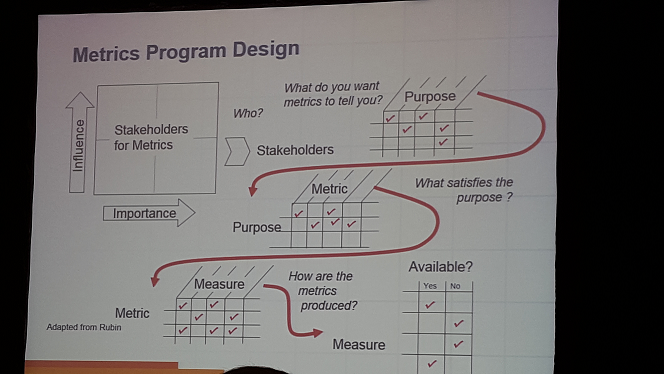
Sample of a series of metrics (WHAT?!?!?!)
9) I didn't hear number nine because I was too busy getting a photo of number eight
10) Customer Centricity: Companies are either going to figure this one out or fail. Your customers are who keep you going to work each day. You better understand how they thought your projects went more than care about any other metric. They keep the lights on.
Monday, Sept 26: 1:18pm
Had lunch with some amazing people from CMI: Corporacion Multi-Inversiones
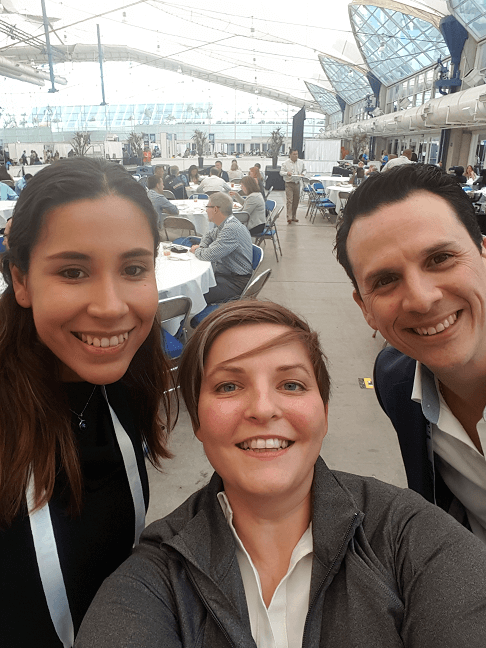
Hi Isa and Luis Pedro!!
Monday, Sept 26: 11:55am
First Session
Luca Romano is a PMI educator, university instrutor, and a consultant. Let's start with the concepts of a portfolio manager: Vision; Mission; Organizational strategy and objectives; portfolio management, strategic planning and management of projects, programs, and operations; other actvities that use your resources.
Your portfolio is typically managed as a group. All management is centralized. This is the way you all follow the same organization and processes. However, this is hard to keep flexible. Instead, if you define, allign, and authorize across the portfolio, using programs, you can devide your troops to be more adaptive.
PPM is really complex. It involves so much politics that stability is better than agility. Teams want their decisions to be right. Let's change the conversation from you are now wrong, but instead you are no longer right. It is just time to change.
If you treat the portfolio as a whole, it is very complex. Change is difficult. You have to stop, change the PPM, and nobody wants to stop working on their projects. Pratically is not simple. However, we all know that portfolios need to change. They change all the time.
Why would a portfolio need to change?
- Mission objective changes
- Strategy changes
- Regulations change
- Market conditions change
- Changes in leadership
- Mergers and acquision
- Executive backing changes
- You forgot something when you were planning
- New initiatives are added
"No plans survive first enemy contact" a quote from some general, but it applies to Portfolio Management.
Adapt:
Think darwin: animals have adapted to get to where they are, but they will make small adjustments based on their environment
Be able to change
Romano used the example of Napoleon's corps d'armes. By dividing his army into tinier sections to move quickly, he was able to defeat an army potentially three times larger than his own. Napolean was not attached to the army as a whole, the same way we should not be attached to our portfolio as a whole. Individual teams must be adaptive. Complex systems cannot be managed as a whole. Your teams must be trained to be adaptive. Adapting is a competitive edge even if you don't use it because your team will learn valuable skills in self-sufficiency.
There are always limitations budget, resources, production capacity, so you must produce a value too. You cannot stop a project part of the way through without losing your value and your investment. Good status reporting are required to meet your value commitments.
Organize your portfolio so certain projects end up īn different layers - stong wind adaptive area ... all the way down to the calm, stable, nonadaptive projects. Structure the strategy and rank stategic objectives: High prority, low priority, stable, unstable.
Decompose the projects into valuable chunks. Estmate a value with each milestone - which are the projects that can be broken down into chunks, and deliver the partial project accomplish one of those value chunks.
The predictability vs. instability of the project will determine where we can execute the project.
Priority is the first rule to apply
Stability is the second rule - stable objectives are more helpfúl
With these metrics, you can move resources to the valuable project, to the stable project, and demonstrate the value of your decisions.
How do i organize the decision?
- Decentralize the tactical decisions into programs
- Allow these programs to be free to decide for themselves
- Manage your program managers to their objectives!
Simplify the way you are adapting. If necessary, program managers can escalate their challenges to you, but focus on decentralizing decision-making.
Know your people
Analyze your team to know if you have the right stategy. Your troops define what kind of strategy you use. Be responsible for your teams' organization and training because that investment upfront will save you time when you need to adapt and adapt quickly.
In summary:
- Cannot be 100% adaptive because you need stability
- Adaptiveness needs to consider the value - don't lose your investments; make sure you accomplish values
- Decompose centralized portfolio management
- Choose tactical resource allocation
Additional Reading:
Project Portfolio Mangement Stategies for Effective Oranizational Operations
by Luca Romano, Editor
Monday, Sept 26: 10:29am
Not a bad place for a PMI Global Congress:
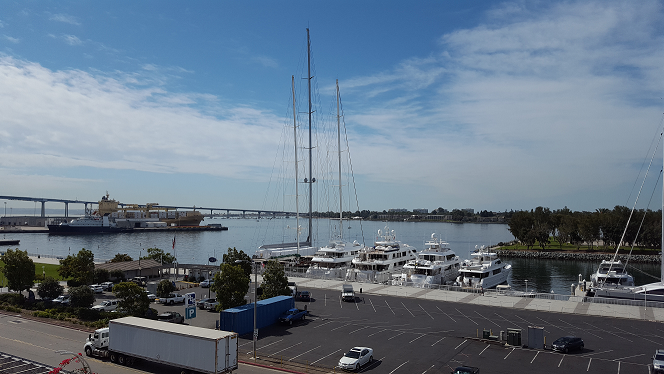
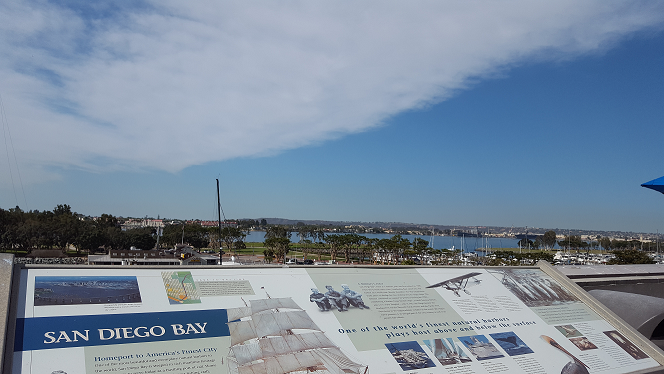
Monday, Sept 26: 9:57am
I got ahead of the crowd heading to the Keynote. Yeah, I'm ten minutes early, but I get to listen to poppy pop music that I am not hip to. I have no idea what I am listening to, but it sounds upbeat. Great way to start a talk that could lead to after breakfast snoozing. Let's see what she has to say. Today is day two of the three day congress. The theme is anticipate, influence, elevate. Each day represents the three topics. Today I will be reporting to you with live updates about Influence in project management. Let's hope my tablet does distract too many of my seat mates around me.
Yep. Dimming the lights. Welcome the Director of PMI board of Directors, Randy Black who introduced Sue Gardner. She was the Director of CBCCA and the PMO director. Later, she became the executive director for Wikipedia. Now she has moved on to other personal adventures. Let's begin:
Sue Gardner loves organizational theory. The CBC is old and large. It shaped the Canadian culture over the decades. It has developed into an aristocratic or a declining organization. It's a beaurocratic organization. The CBC wants to adapt and stay nimble, but it is still pretty bard to get things done. Wikipedia, on the other hand, was eight employees when she started there. Gardner moved the team to the Bay Area and found herself competing for talent. She was not used to competing at the CBC. She solved problems like how to get people to work for us? What makes us effective and productive?
Sillicon valley is the future of work. More workplaces are going to look more like Silicon Valley. In any business, there are Challengers, Incumbent companies, and Declining companies.
- Challenger companies are new and want to upset the status quo
- Incumbents started as challengers, but they are now the status quo - the goal is to stay on top as long as possible
- Alas, all companies move toward Decline as they get bigger, set in their ways, upset by the new Challengers
This cycle is the normal business cycle. Now, it's aggressively speeding up. Technological changes are spurring this on. "Software is eating the world." Technology is taking over the work that people used to perform. The people creating the code and the technology itself are becoming more central in their organizations. Gardner used Uber as the example. Taxis considers themselves immune to technology. Everybody knows what we do. We don't need to move toward technology because everybody knows how to hail a taxi. Well, Uber showed them otherwise, and now taxis are on the decline to Lyft and Uber. Technology is core to everything that we do.
In Silicone Valley, abundance drives innovation. Either you work in Amazon's warehouse and get told what to do all day long, or you work in the information part of Amazon where you are valued. No more cube farms. You can tell a lot about an organization by the myths they tell themselves.
Facebook's slogan used to be "move fast and break things" but it needed to evolve into "move fast with stable infra"... this is not as catchy. Valve's handbook: take risks, break things. There's a distaste for detail and neatness. Orvile Wright didn't have a pilots license.
What does this mean for PMs? What is coming in the workplace?
1) Don't hide your mistakes. Learn from them.
In the corporate world, it was always said that it was ok to fail, but nobody really meant it. In this high uncertainty time, nobody knows the right answer. Try to find the right answer. Testing and iterating and constructing hypotheses is the way to present what you learned. Try to learn together, and learn to share with everybody. Unlearn your lack of desire to admit failure. Instead, do it wrong and present what you learned.
2) Adapt to other people. Don't expect them to adapt to you.
Adapt to the needs around you. Learn how people on your team like to communicate, are you a morning or evening person, email on weekends? Project Management is about the elimination of noise and friction among people. "You're ok, and things are well looked after."
3) Feed people.
Thats number three on the list. It's unbelievably powerful. The role of food of our culture is so symbolic. Breaking bread creates solid bonds. Be the one with the bowl of candy on your desk. Your job is to know everything. As people wander in, learn all the dish because of your candy dish.
4) When there is an elephant in the room, acknowledge it and resolve it.
You are the key communicator, so you cannot let people live in a fantasy land. You know the trouble spots BEFORE it happens. If you let people live in a fantasy land, they will. Make it safe for people to tell you the truth and bring you bad news.
5) Help people understand each other; be the connective tissue.
In the absence of communication, people fill that vacuum with fear and worst case scenarios. PMs fill those gaps. The Project Manager is in a unique position to resolve those problems because you have the information and the communication skills.
Requested reading:
Managing Humans by Michael Lopp
Peopleware: Productive projects and teams by Tom DeMarco and Timothy Lister
The Boy Kings by Katherine Losse
Monday, Sept 26: 8:37am
I LOVE PROJECT MANAGERS! They are always looking for the Lessons Learned from every project. One of their primary roles is to monitor execution of projects and improve the execution next time through proper planning. I give you a prime example of the PM gathering their lessons learned at the PMI Global Congress:
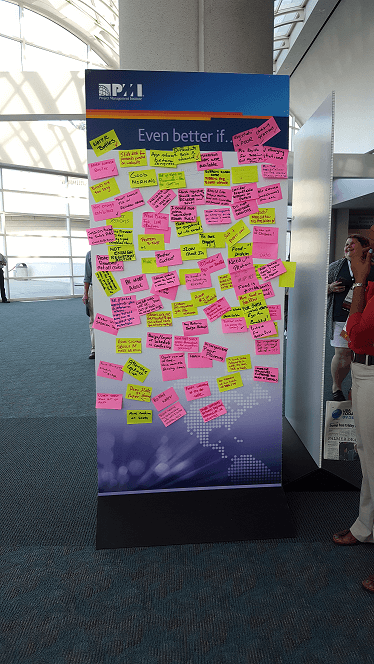
Isn't this the best!?! Upon talking with some of the other attendees, the
PMI Global Congress Twitter Feed is full of helpful suggestions. Sure, people like to have an outlet for complaints, but for Project Managers those complains are weighed and incorporated into legitimate Lessons Learned to improve the project for next time.
Monday, Sept 26: 8:06am
Ok, first impressions: This place is AWESOME! Everyone is so friendly! I am in my element with these nerdy PM types. Yeah, we are all a little awkward, but in the most endearing way. I'm sitting with some PMs from Washington DC for breakfast. I'm on my way to scope out all the vendors.
Monday, Sept 26: 7:38am
Found a quiet spot to update. Now I just gotta find the breakfast spot before the keynote speaker at 9am. I am so excited to hear from Sue Gardner.
Monday, Sept 26: 6:57am
I had previously reported that I would enter the convention center via doors D/E. Turns out that was a bit of amisnomer:
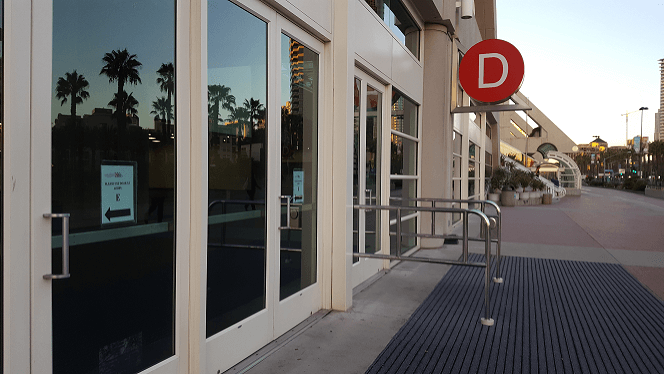
The sign says please use Door E. Looks like the convention center is updating us in real-time too. Just like me.
Monday, Sept 26: 6:46am
As bustling as the Gaslamp District was last night, it was DEAD quiet at quarter to seven in the morning:
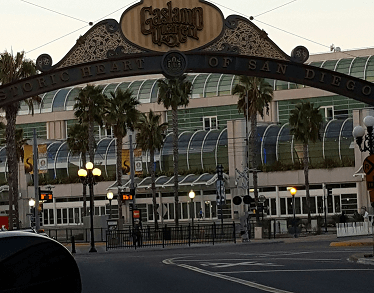
Great time for a morning walk to the convention center!
Monday, Sept 26: 6:23am
All dressed up and nowhere to go for another hour. Check-in starts at 7:30am using the D/E entrance. I wonder if that is by me or on the other side. This convention center is HUGE. Hope my business casual attire is juuuuuuuuuust right:
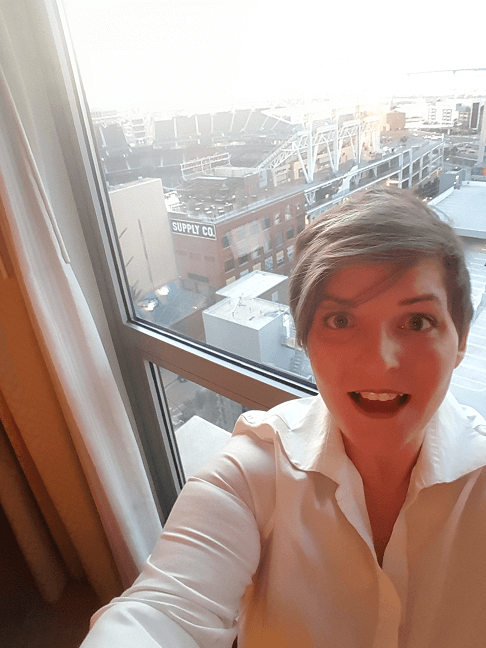
- Selfie with Petco Park (we're buds now)
Monday, Sept 26: 5:33am
Couldn't sleep anymore - too excited!! Today's the day I attend PMI Global Congress. I am looking forward to the speakers and learning project management lessons from the best in the business across all verticals. Stay tunes for all the great tidbits I come away with.
Sunday, Sept 25: 8:27pm
It's pumpkin time for this Cinderella. I'm turning in early because tomorrow is the busy day!! I'm excited to report back on some great sessions and maybe I'll get a selfie with some of the people I meet at the Global Congress!!!
But until then, I am going to indulge in some SportCenter. Afterall, I don't have cable at home. Gotta seize the opportunity when I can.
Sunday, Sept 25: 7:39pm
Walked back to my hotel and enjoyed people-watching in the Gaslamp district. Very cool part of town.
Sunday, Sept 25: 6:38pm
Worked on re-reading and formatting this blog while eating dinner at Cafe 21. Very nice place with an expansive happy hour before six. Take a look if you are at PMI Global Congress. It's on Fifth - a straight shot east from the convention center. They also have live music starting at around seven or so every night.
Sunday, Sept 25: 5:47pm
Almost every restaurant has a sign in its window:
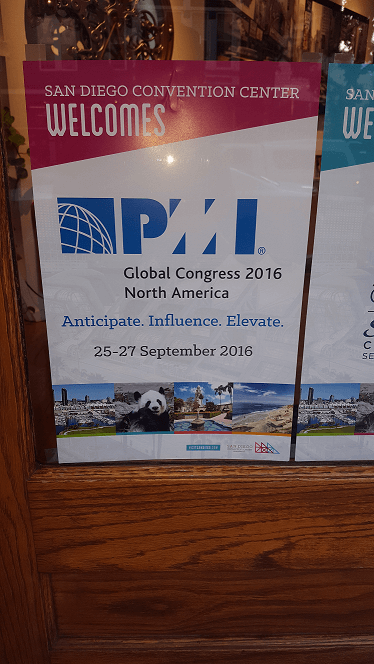
Yeah. We're kinda a big deal.
Sunday, Sept 25: 5:35pm
On my way to dinner I passed the "Gaslamp Strip Club: A steak place" Stay classy, San Diego.
Sunday, Sept 25: 4:49pm
I cannot be the only person slash only business traveler who scopes out their hotel room when they first arrive. I'm talking:
1) Open every drawer to find the Gideon's Bible (plus decide where you want to unpack your clothes)
2) Bounce test both beds to see if there are dips or differences in comfort level
3) Verify drapes will solidly blank all light out of the rooms - I've been burned by gappy drapes before
4) Lift the phone receiver for a dial tone (this one's weird because we all have mobile phones, but just in case!)
5) See what goodies are available for you in the personal care department (soap - yawn, shampoo and conditioner - bonus, shower loofa - double bonus, knowing its called a loofa - priceless)
6) Just how many towels are they going to provide me? Don't make me call down for enough towels!
7) Other bonuses like hair dryers, coffee makers, ice buckets ... how about when they provide you with a flat iron? Schnazy eh?
Anyway, my original survey was uneventful until I saw the gift-wrapped towel:

The twine is a homey, personal touch.
Sunday, Sept 25: 4:25pm
Walked from the Sante Fe station to my hotel. It was a pleasant stroll through beautiful San Diego and the Gas Lamp District. I am not going to mention that it is 95 degrees today. So just forget that I wrote it is 95 degrees today. That is not an important detail when walking distances. I am not one to complain.
I was helped by a person who embodies the best of my customer service field. Travis was a great help as he checked me in. He hooked me up with a water view and a view of Petco Park. Plus the Coronado bridge!

When my key didn't work the first time (due to the blinking red light of death - you all know the blinking red light of death when you try to use your hotel room key for the first time, right? Terrible feeling) he came up to the floor with me to be sure that the new key he created worked. Those of us in the client-facing or service industry can identify this solves two problems:
1) you get to see first hand how the customer is trying to use their room key - just in case it is user error
2) you get to see how the key responds to the typical swiping action - so you know it is for sure the key that is causing the problem (stupid key)
Retracing the steps with the client can be a valuable way to troubleshoot any issue. How many of you have experienced our support team getting on a phone call with you to watch you do it when we just can't seem to recreate a bug?
Anyway, great job Travis! You deserve a Margy award. This is an award that I just made up. Maybe PI can host the ceremony like ESPN hosts the "espy awards." An award for us by us. Thanks ESPN.
Sunday, Sept 25: 3:40pm
Thanked Kris the conductor as I left the train. We made eye contact. I paused a moment and let the words linger as I kept eye contact: "thank you." ... still nothing. My pacific-northwesterner charms are lost on this man. Oh well. There's always the trip back. More to follow.
Sunday, Sept 25: 3:30pm
Got some great work done on the train. I'm so ready for tomorrow! PMI Global Congress is going to rock!
I have arrived in beautiful downtown San Diego. I am about to leave the comfort of my train and search the city for my hotel. Good thing we travel with map apps in our phones. But I have to be sneaky. I don't want to look like that out-of-towner who needs a map to get around, right? You want to always play it cool like you
know where you are going at all times right. Even if it is boldly in the wrong direction.
Sunday, Sept 25: 3:15pm
I am a very happy traveler despite the unfazed conductor (aforementioned in one of my first entries). As he walked by I caught his name. His name is Kris. He still didn't change his expression as he looked right at me. And you guys know me; I am SO friendly I make your teeth hurt. Nope, not Kris. Stone silence.
Sunday, Sept 25: 2:51pm
Google has asked me to post my photos to Google Maps, so I did. I know, I know. I'm helping Skynet track me better. However, because I tracked my photos, Google Maps also showed me the traffic I was missing:

And sure enough, I looked for myself. Check out this traffic going down to San Diego. Those are cars. In a long line. I'm thinking of a Cake song. Comment if you feel me.

Sunday, Sept 25: 2:43pm
I have been able to get so much done because of taking the train. I have decided I love train travel. It's not my usual method of transportation because us Californians are known for loving our cars, but I have seen the light. The only downside is I may or may not have been a little distracted by the views (see below). I may have experienced several periods of time where I starred out the window instead of worked on my laptop. Maybe. I'm not sayin'. I'm just sayin'.
These views must be what everybody thinks of when they think of the stereotypical California:
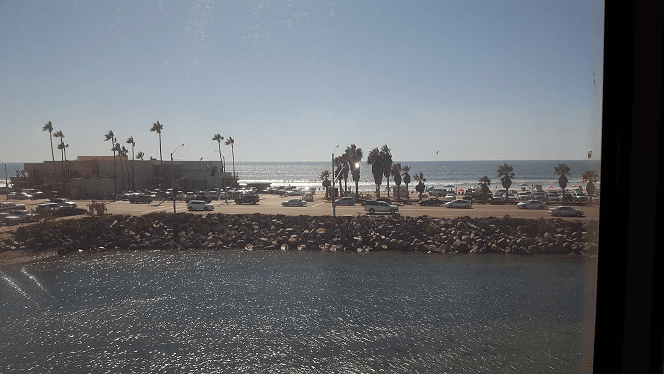
Sunday, Sept 25: 2:17pm
Taking photos from a moving train!!!!!

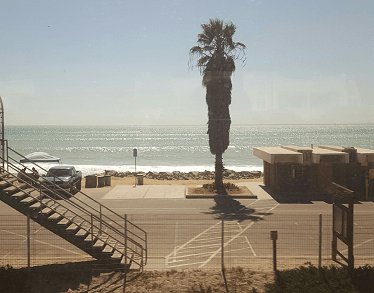
Sunday, Sept 25: 2:03pm
Did you know that cities throughout Orange County have banned the use of train whistles at train crossings to protect the delicate ears of their residents and maintain property values? This is both
dangerous because those whistles are designed to warn people to not get hit by a train and
strange because the trains were here loooooong before someone built a beach house. Trains have been coming through here since the nineteenth century. ... But I'm no lawyer.
Sunday, Sept 25: 1:57pm
Ok. So on the train. Made it. Getting used to my surroundings. There is a tray for me to set up and send y'all some emails, but I'm am instead getting used to beautiful views. The conductor came by to scan my ticket and didn't say a word. It was something out of a black and white horror film. More to follow if he is suddenly standing over me because I dosed off due to the moving train lulling me to sleep.
Sunday, Sept 25: 1:40pm
I am waiting for my train at the San Juan Capistrano station. It is a beautiful location across from the historic Los Reyes district of SJC. If you are every visiting orange county in California, I recommend stopping by if you plan to tour the coast heading south from Disneyland. This blog has not been paid for by the tourism board of San Juan Capistrano. I just really like this town.